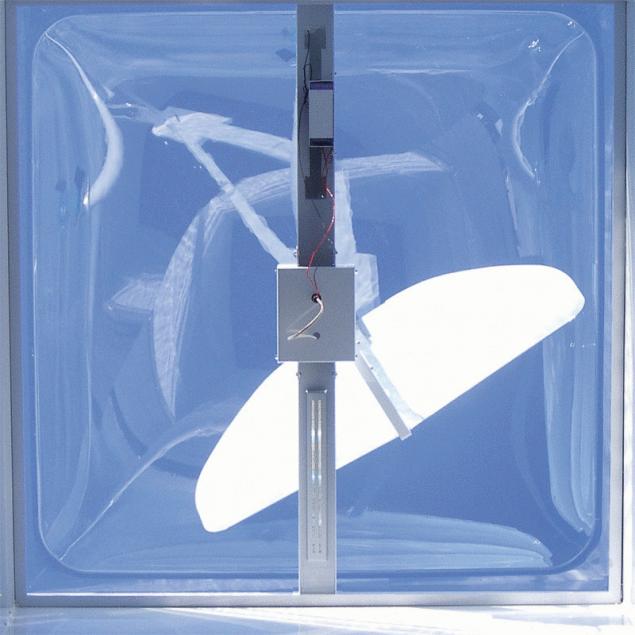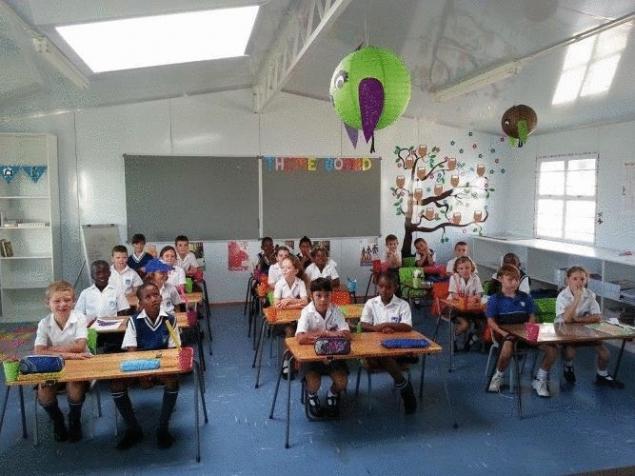Lightcatcher day light in the room 10 hours a day
 Bashny.Net
Bashny.Net
Thirty six million two hundred seventy eight thousand five hundred
In the nineteenth century the buildings were placed skylights, which did not require any special design change in the roof, and most importantly, provide a large flow of natural light. However, none of them can be as effective as a new invention Lightcatcher.
Modern invention from Belgium is distinguished by a few simple things. First, it actively tracks the best source position of light in the sky, collecting the maximum amount of light. Secondly, while the availability of daylight, the system automatically turns off interior lighting, allowing you to save energy.
For residents of countries with a subtropical climate, it may seem not an interesting idea, but for Belgium it's an urgent problem.
"In Belgium we almost never see the sun, but can track the position of the light spot, which is often hidden between the clouds," says Martin Michielsens (Maarten Michielssens), founder of EcoNation, the company the device manufacturer.

"If you are anywhere in Singapore with a large number of high-rise buildings, the sun is usually directly in front of those buildings. But if you are in another place, wherever it was, our system will track maximum intensity of the light flux and deploy mirrors in the right direction."
Basically the work principle of the LightCatcher is very simple. Mirror enclosed in a light dome made of polycarbonate, looking for the optimal position of the light spot. As a rule, is the sun, but if line of sight is blocked by clouds or other objects, the device finds the brightest light source. Mirrors catch the incoming daylight that is then reflected, filtered and amplified in a light shaft before spreading throughout the building.

According to the developers, this technology allows you to do without the use of artificial lighting to an average of 10 hours a day. The installation itself, taking in the roof window area of 1.6 square meters, provides enough light for a floor area from 60 to 120 square meters.

The movement of the mirrors LightCatcher is made with patented sensor technology, which is always looking for the best source of spot light, again according to official information, absolutely free, that is without using external energy. A small integrated solar panel operates independently, without the need for a mains connection.

Exterior of the dome of the device is made of high quality impact resistant polycarbonate and are virtually destructible. It does not yellow and is protected from debris build-up — normal rain enough to maintain it clean. The design of the device also provides acoustic insulation.
LightCatcher self-regulating and self-learning system. After installation there is no need to configure it again. The health check is carried out using the remote monitoring system in real-time.

The company is very confident in the power saving abilities of the device and offers it to the lease as do other companies with solar panels. The exact payback period varies depending on the type of coverage building and sustainability of use. Payback the full cost – about 1750 $ in a commercial building with old lighting system will take about one year. Return the device in the building with efficient LED lighting can take up to five years.
Since the release on the market Michielsens 120 sold devices to customers in Belgium, opened offices in South Africa, Morocco and China.
P. S. And remember, only by changing their consumption — together we change the world! ©
Source: facepla.net
In the nineteenth century the buildings were placed skylights, which did not require any special design change in the roof, and most importantly, provide a large flow of natural light. However, none of them can be as effective as a new invention Lightcatcher.
Modern invention from Belgium is distinguished by a few simple things. First, it actively tracks the best source position of light in the sky, collecting the maximum amount of light. Secondly, while the availability of daylight, the system automatically turns off interior lighting, allowing you to save energy.
For residents of countries with a subtropical climate, it may seem not an interesting idea, but for Belgium it's an urgent problem.
"In Belgium we almost never see the sun, but can track the position of the light spot, which is often hidden between the clouds," says Martin Michielsens (Maarten Michielssens), founder of EcoNation, the company the device manufacturer.

"If you are anywhere in Singapore with a large number of high-rise buildings, the sun is usually directly in front of those buildings. But if you are in another place, wherever it was, our system will track maximum intensity of the light flux and deploy mirrors in the right direction."
Basically the work principle of the LightCatcher is very simple. Mirror enclosed in a light dome made of polycarbonate, looking for the optimal position of the light spot. As a rule, is the sun, but if line of sight is blocked by clouds or other objects, the device finds the brightest light source. Mirrors catch the incoming daylight that is then reflected, filtered and amplified in a light shaft before spreading throughout the building.

According to the developers, this technology allows you to do without the use of artificial lighting to an average of 10 hours a day. The installation itself, taking in the roof window area of 1.6 square meters, provides enough light for a floor area from 60 to 120 square meters.

The movement of the mirrors LightCatcher is made with patented sensor technology, which is always looking for the best source of spot light, again according to official information, absolutely free, that is without using external energy. A small integrated solar panel operates independently, without the need for a mains connection.

Exterior of the dome of the device is made of high quality impact resistant polycarbonate and are virtually destructible. It does not yellow and is protected from debris build-up — normal rain enough to maintain it clean. The design of the device also provides acoustic insulation.
LightCatcher self-regulating and self-learning system. After installation there is no need to configure it again. The health check is carried out using the remote monitoring system in real-time.

The company is very confident in the power saving abilities of the device and offers it to the lease as do other companies with solar panels. The exact payback period varies depending on the type of coverage building and sustainability of use. Payback the full cost – about 1750 $ in a commercial building with old lighting system will take about one year. Return the device in the building with efficient LED lighting can take up to five years.
Since the release on the market Michielsens 120 sold devices to customers in Belgium, opened offices in South Africa, Morocco and China.
P. S. And remember, only by changing their consumption — together we change the world! ©
Source: facepla.net
Tags
See also
To see in the daylight my life...
Effective technology: solar ORC will ensure that the heating, electricity and hot water
World in Photos
Interesting stories about people who forges money
Soviet tank from the border in 1941
9 houseplants that are perfectly clean air
Now I wear flip flops no more than 1 hour a day! And that's why…
The ground heat exchanger as an element of the ventilation system of the house
Blogger David Cain on personal effectiveness - "Your lifestyle has already created"!!!
What to do to sleep only a few hours a day at a convenient time

















